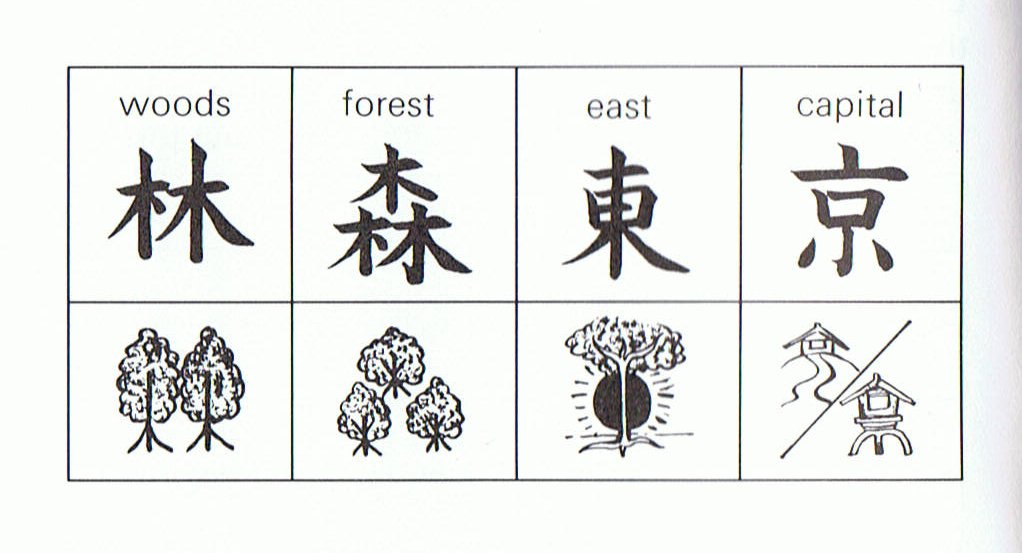2. According to a BBC produced TV progam (documented in the book 'Japanese') the glyph for 'east' (too) - as in Tookyoo ('Eastern Capital') - is derived from a picture of a tree behind which sun is rising ( '... often explained as the sun rising behind a tree ...'):
It is a faulty explanation. Anciently it was instead a picture of a wooden pole (the vertical in the middle) for carrying things on, more specifically a pole thrust through a tied sack. Inside a tied sack, of course, it is absolutely black. I guess the wooden pole was once associated with the world tree and it went right through the 'sack', i.e. the darkest time of the year at winter solstice. Heke is one of words Metoro used at mauga glyphs. It means (among other things) an octopus (8 feet). According to Barthel 2: '... kahukahu o heke, an octopus hiding in his ink'. Arriving at the last (8th) section of the cycle a dark sack is waiting for the sun. In the 29th night of the moon it cannot be seen. The sun has a longer cycle, but at the end also he must disappear for a while. |
